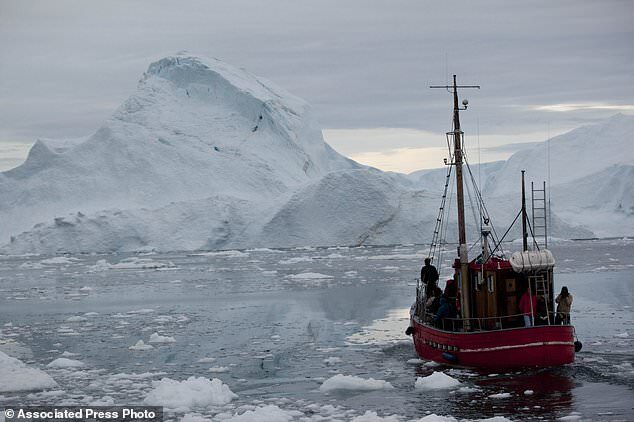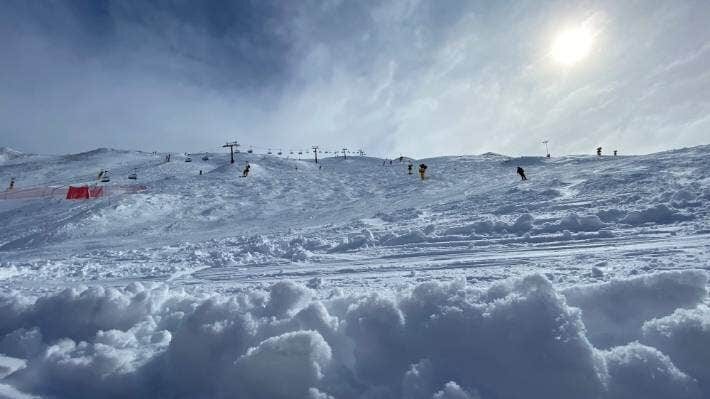OF THE
TIMES

Melbourne, Sydney weather: 'Polar plunge' brings snow across four states, cuts power to thousands
After delivering snow to places where it's never been seen before, the polar blast has hit Sydney with a severe weather warning in place.
Thousands were left without power in Sydney's east this afternoon after being lashed with strong winds, causing 130 electrical hazards as roofs were torn from homes and powerlines were dragged down.
Winds of more than 100km/h were recorded across the city as Bondi, Bondi Beach and North Bondi were left without electricty from 1.40pm, affecting 1700 residents.
Power has since been restored in these areas.
It comes as the city was hit by the "polar surge" that rocked Australia's south east today, bringing some of the coldest September temperatures for years and delivering snow to places that have never seen it before.
A severe weather warning is place for damaging winds of up to 90 km/h for the Illawarra and Southern Highlands to Sydney and the Central Coast.
"A strong cold front is bringing gusty winds to much of NSW today. Vigorous winds are expected to continue during Saturday in the front's wake," the Bureau of Meteorology (BOM) said.
Temperatures are also set to fall in Sydney and other parts of New South Wales as the system passes through.
Elsewhere, snow has fallen as low as just a few hundred meters above seal level as a "polar plunge" sweeps across south eastern Australia. It's so cold, people have been seen skiing 200kms north of Adelaide.
"We have snow here in western Victoria in places that never or rarely have snow," said one Victorian on Twitter.
Temperatures in Melbourne didn't get into double figures until 10.30am on Friday morning with the day set to top out a just 12C.
Parts of Victoria may experience a September day that hasn't been this chilly since the early 2000s.
The BOM has said Friday and Saturday temperatures will be so chilly it will feel more like mid-July than late-September.
A cold air mass brewed up from the Great Australian Bight on Thursday night and is now passing through Victoria and southern New South Wales.
Images have been posted online of snow falling close to Jamestown, Peterborough and Hallet in SA as well as on the lower slopes of Mt Elephant close to Lismore in Victoria, 170 km west of Melbourne. Lismore is only around 200 metres above sea level.
On Friday, the BOM labelled the weather event a "polar plunge" that could bring hail and thunder as seen as snow with maximums 5 - 10C below the average for this time of year.THIS IS NOT A DRILL PEOPLE ARE #SKIING IN SOUTH AUSTRALIA! Check out Alex McDonald at Hallett in SA's Mid North! #snow #SA @abcadelaide @abcnews https://t.co/jbUETwPEMS pic.twitter.com/fUolpKgN3R
— Gabriella Marchant (@gabby_marchant) September 25, 2020
Comment: Elsewhere in the southern hemisphere late substantial snow has also been predicted for South Africa this weekend reports The South African:There's a cold front sweeping in from the west of the country, and as the temperatures plummet, some of the forecast rain is likely to bring brief snow flurries with it on Saturday. The weather is taking a turn for a miserable in both the Western Cape and Eastern Cape this weekend, and the next few days promise to be chilly.
SA WEATHER FORECAST FOR SATURDAY 26 SEPTEMBER
According to the latest forecasts from Ventusky - the weather mapping service that uses up-to-the-minute data - there will be a substantial amount of settling snow in regions that are well-known for their wintery aesthetics.
It is predicted that snow will make landfall on Saturday morning. Only the two aforementioned provinces will be hit by the icy change in weather, but given that the affected locations are high above sea level, a little blizzard or two isn't exactly out of the ordinary for them. This may be relatively late in the year for a snow forecast, but it's nothing a few extra blankets and a decent heater can't help with!

Comment: More from EurekaAlert: